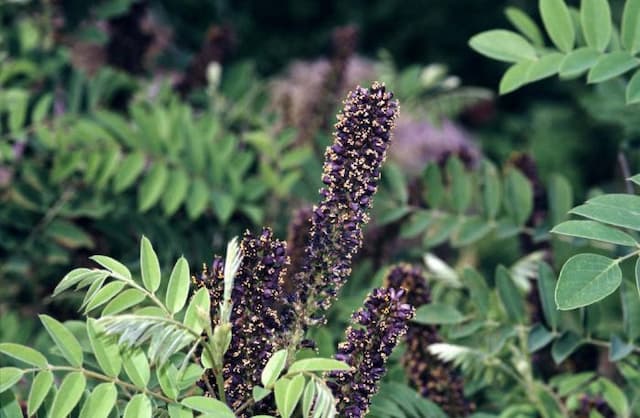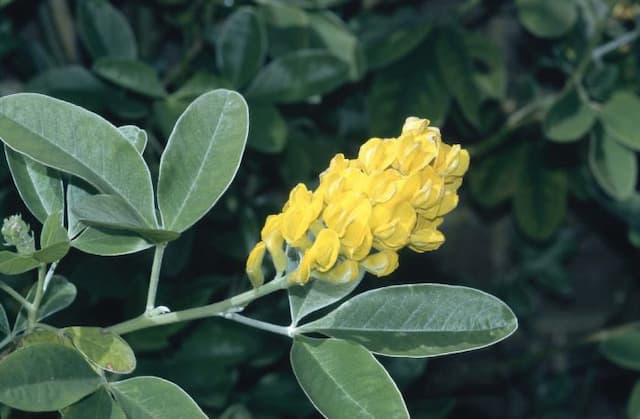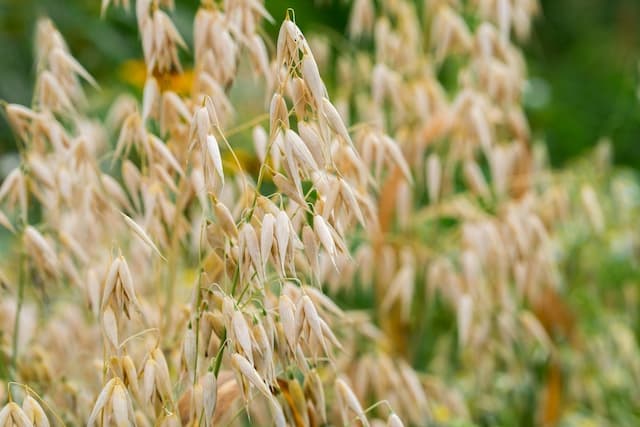Redbud 'Forest Pansy' Cercis canadensis 'Forest Pansy'



ABOUT
Cercis canadensis 'Forest Pansy' is a small deciduous shruvb or small tree that grows up to 20 feet in height with a rounded to vase-shaped growth habit. The trunk can have a diameter of up to 10 inches.
The leaves are heart-shaped and approximately 4-6 inches long and wide, and emerge as a bronze-purple color.
The bark is smooth and light brown, becoming more rough and furrowed as the tree ages.
In early spring, before the leaves appear, the tree produces clusters of small, pea-like pinkish-purple flowers that grow along the branches and main trunk. These flowers are followed by flat, brown seedpods that are 2-4 inches long and remain on the tree throughout the winter.
The branches are generally upright, but can be somewhat weeping and the canopy is usually rounded.
About this plant
 Names
NamesFamily
Fabaceae
Synonyms
Eastern Redbud 'Forest Pansy'
Common names
Cercis canadensis 'Purple Leaf'
 Toxicity
ToxicityTo humans
Cercis canadensis 'Forest Pansy' is not considered toxic to humans. However, the ingestion of the plant's seedpods and leaves can cause vomiting, diarrhea, and incoordination.
To pets
Cercis canadensis 'Forest Pansy' is not considered toxic to animals. However, the ingestion of the plant's seedpods and leaves can cause vomiting, diarrhea, and incoordination.
 Characteristics
CharacteristicsLife cycle
Perennials
Foliage type
Deciduous
Color of leaves
Purple
Flower color
Pink
Height
Up to 20 feet
Spread
Up to 20 feet
Plant type
Shrub
Hardiness zones
4
Native area
Mexico
Benefits
 General Benefits
General BenefitsThe vibrant purple foliage and pink-purple flowers of the 'Forest Pansy' cultivar make it a popular choice for landscaping and garden design.
The tree's flowers and foliage provide food and habitat for bees, butterflies, and other pollinators, as well as birds and small mammals.
The tree's root system can help improve soil quality by increasing microbial activity and nutrient availability.
The tree provides shade and cooling benefits, making it a popular choice for street plantings and urban areas.
The tree's root system can help prevent soil erosion, making it a good choice for areas prone to erosion or landslide. Medical Properties
Medical PropertiesVarious parts of the plant, including the bark and leaves, have been used to alleviate pain.
The leaves and bark contain compounds that have anti-inflammatory properties.
ome parts of the plant have been traditionally used to treat infections.
The leaves of the plant contain compounds that have antioxidant properties.
It is important to note that more research is needed to confirm the traditional uses of the plant and its potential medical properties. Consult a healthcare professional before using the plant for medicinal purposes. Air-purifying Qualities
Air-purifying QualitiesCercis canadensis 'Forest Pansy' has some air purifying qualities as it can help remove pollutants from the air. Its leaves can help filter out toxins, such as formaldehyde and benzene, making the air cleaner and fresher to breathe.
However, it is important to note that the air purifying qualities of this plant may not be as significant as other air-purifying plants, and it should not be solely relied upon to purify the air in a room or space. Other Uses
Other UsesThe bark of the tree can be boiled down to make a brown dye, while the leaves can be used to make a yellow dye.
The wood of the tree can be used in woodcrafts such as carving and woodworking.
The leaves of the tree can be used to make a tea that is rich in vitamin C and antioxidants.
The tree is often used for ornamental purposes, such as in landscaping and as a shade tree in gardens.
The flowers of the tree are a source of nectar for bees, and can be used in beekeeping to produce honey.
Interesting Facts
 Plant Symbolism
Plant SymbolismCercis canadensis 'Forest Pansy' is not traditionally associated with any particular symbolism or cultural meaning. However, as an ornamental tree, it is often used to symbolize natural beauty, renewal, and hope.
The striking deep purple-red foliage and pinkish-purple flowers make the tree a favorite for landscaping and gardening.
In some cultures, the redbud tree is associated with love and devotion, and it is sometimes given as a gift to express affection.
 Water
WaterCercis canadensis 'Forest Pansy' prefers consistently moist, well-draining soil. Water the plant deeply once a week, but adjust watering frequency as needed depending on environmental conditions. It is important not to let the soil dry out completely.
 Light
LightCercis canadensis 'Forest Pansy' grows best in partial shade to full sun. The plant prefers bright, indirect light or a few hours of direct sunlight. If grown in too much shade, the foliage may not be as vibrant.
 Temperature
TemperatureThe ideal temperature range for Cercis canadensis 'Forest Pansy' is between 60-80°F. This plant can survive temperatures as low as -20°F during winter dormancy. However, during extreme heat, it is important to ensure that the soil remains moist and the plant is not exposed to direct sunlight for prolonged periods of time.
 Pruning
PruningCercis canadensis 'Forest Pansy' generally requires minimal pruning, but can be pruned to maintain its shape or to remove dead or damaged branches. Pruning should be done in late winter or early spring, before new growth begins. To prune Cercis canadensis 'Forest Pansy', use sharp, clean pruning shears to make cuts at a 45-degree angle, just above a node or bud. Cut off any dead, diseased, or damaged branches, as well as any crossing branches that are rubbing against each other.
 Soil
SoilCercis canadensis 'Forest Pansy' prefers well-draining, loamy soil with a slightly acidic to neutral pH of 6.0-7.0.
 Humidity & Misting
Humidity & MistingIt prefers moderate humidity levels, but can tolerate some dryness as long as it is not excessive. It is important to avoid overly wet conditions, as this can lead to root rot.
 Suitable locations
Suitable locationsIndoor
Not growing.
Outdoor
All year round.
Hardiness zone
USDA 5 and higher.
 Life cycle
Life cycleCercis canadensis 'Forest Pansy' begins its life as a seed that is planted in the soil. Once the seed has germinated, the plant will start to grow, and it will develop its first set of leaves. As the plant continues to grow, it will produce more leaves and start to develop a trunk.
After a few years, Cercis canadensis 'Forest Pansy' will begin to produce flowers. The flowers are pink or purple and grow in clusters on the branches of the tree. Once the flowers have been pollinated, they will start to develop into seed pods.
As the plant matures, it will continue to grow taller and wider, eventually reaching a height of 20 to 30 feet and a width of 15 to 20 feet. The tree will continue to produce leaves and flowers each year, and it may even produce multiple sets of flowers throughout the growing season.
Cercis canadensis 'Forest Pansy' can live for several decades, with some trees living up to 60 years or more if they are properly cared for. During this time, the tree will continue to grow and produce leaves and flowers, providing shade and beauty to its surroundings. Propogation
PropogationPropogation time
Fall, spring, summer
Seed:
Collect the seed pods in the fall when they have turned brown and become brittle. Remove the seeds from the pods and soak them in warm water for 24 hours. Plant the seeds 1/2 inch deep in a well-draining potting mix and keep them moist. Germination typically takes 30-60 days.
Hardwood cutting:
Take cuttings from hardwood stems in late fall or winter when the plant is dormant. Cut 6- to 8-inch sections of stem and dip the cut end in rooting hormone. Plant the cuttings in a well-draining potting mix and keep them moist. Roots should develop within 4-6 weeks.
Softwood cutting:
Take cuttings from softwood stems in the spring or summer when the plant is actively growing. Cut 4- to 6-inch sections of stem and remove the lower leaves. Dip the cut end in rooting hormone and plant the cutting in a well-draining potting mix. Keep the mix moist and place the pot in a warm, bright location. Roots should develop within 3-4 weeks.
 Pests
PestsSpider mite, Aphid, Japanese beetle, Caterpillar
 Diseases
DiseasesAnthracnose, Root Rot, Powdery mildew, Leaf spot, Rust, Canker









